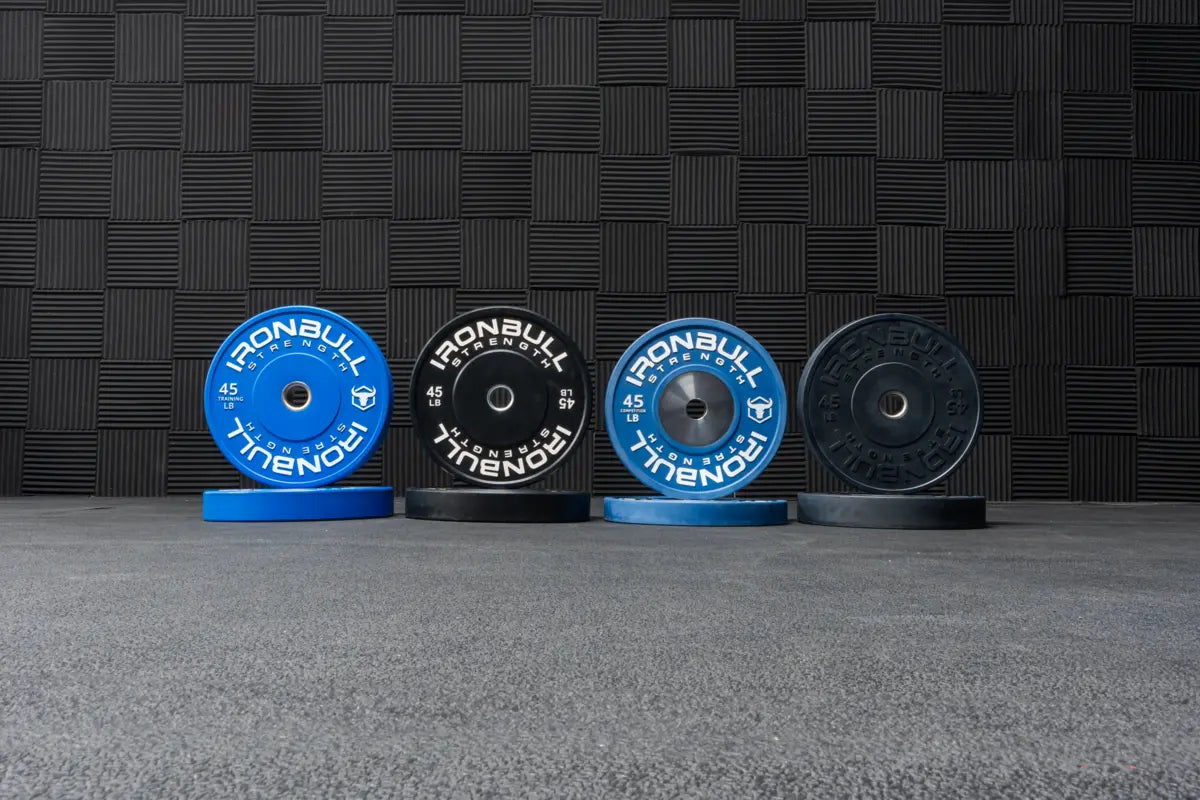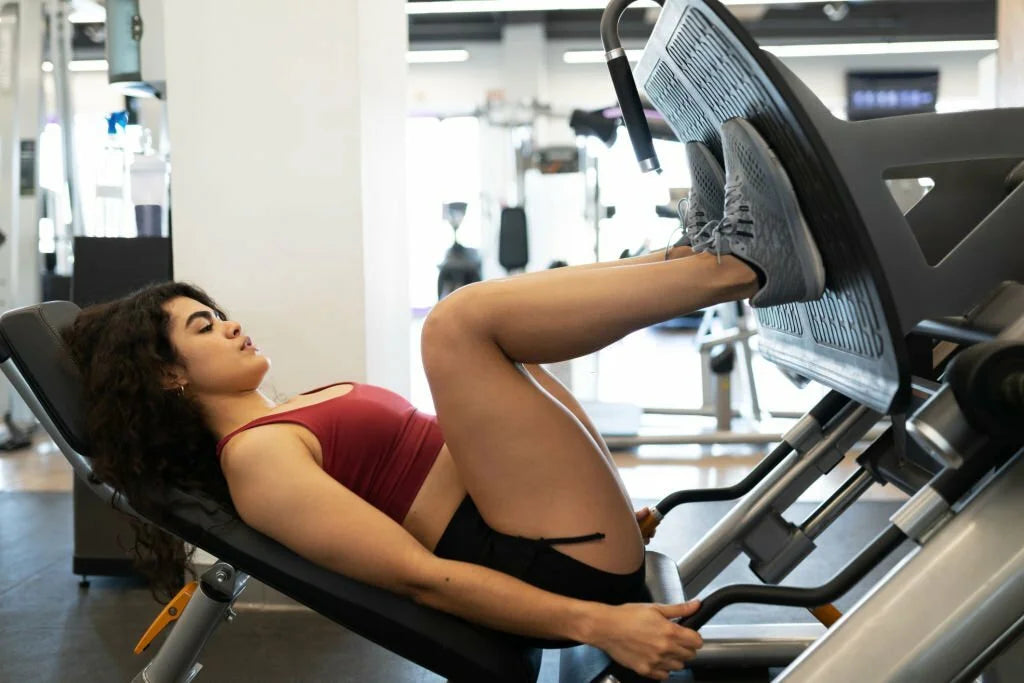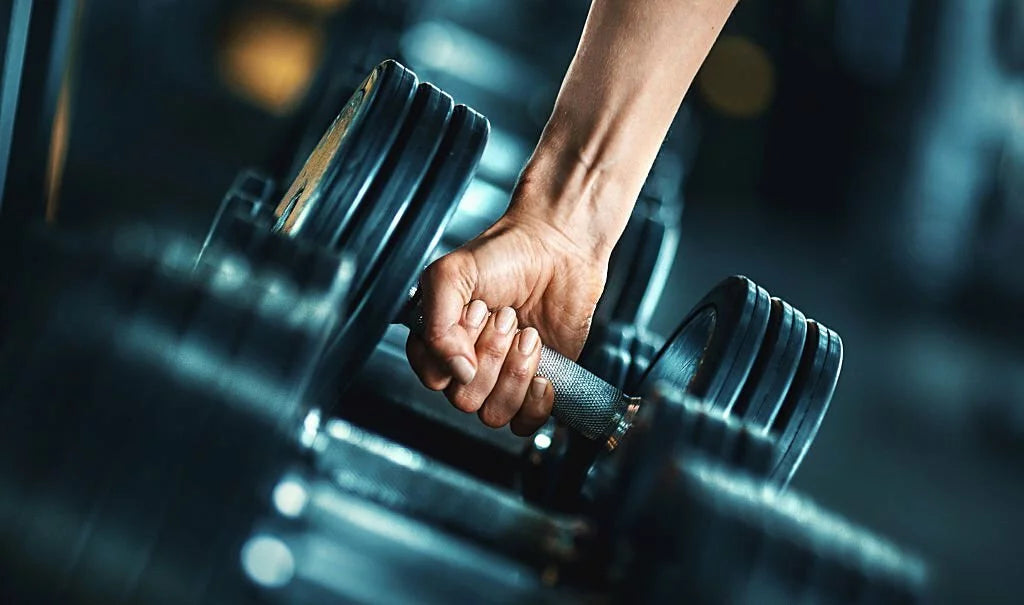Lifting At Home: A Beginners Guide

Are you looking to set up a home gym but need help figuring out where to start? We’ve got you covered. This guide has been designed to answer your home gym questions, give you the confidence to set up a killer lifting at home space and provide a roadmap to success.

Let’s get started.
Basic Equipment Requirements
The basic equipment requirements for weight lifting at home include:
- A power/squat rack
- Barbells
- Dumbbells
- Adjustable weight bench
- Pull-up bar or resistance bands
- Exercise mat
Additionally, you may also want to consider purchasing other equipment, such as:
It's important to note that you don't need to buy all of this equipment at once to lift weights at home. You can start with a basic home gym package and expand later as your budget allows.
Why Build a Home Gym
There are several benefits of weight lifting at home over buying a gym membership, including:
Working out at home gives you the freedom to exercise whenever you want, without worrying about gym hours or the hassle of commuting. It’s your space, so you don't have to deal with anyone watching or judging you.
Plus, it can save you money compared to a gym membership, especially if you’re consistent. You get to choose the equipment that fits your goals, and you’ll know everything’s clean because you’re in charge of the space.
Ideal Starting Weights for Your Home Gym
A good starting poundage for a home gym will depend on your fitness level, experience, and goals. However, a general starting point for a barbell and weight plates is around 150-200 pounds (68-91 kg). This typically includes a barbell that can hold up to 45 pounds and a combination of weight plates.
For example, you could start with a 45-pound barbell and a set of 2.5, 5, 10, and 25-pound plates, for a total of 150 pounds. This will allow you to perform various exercises, such as squats, deadlifts, and presses, with a manageable weight while allowing room for progression as you get stronger.
Setting Up a HIIT Station at Home
To set up an effective HIIT (high-intensity interval training) gym station, you will need:
- A set of adjustable dumbbells or kettlebells for exercises like squats, lunges, deadlifts, and presses, with a manageable weight while allowing room for progression as you get stronger.
- A plyometric box for agility, plyo, and high-intensity cardio work.
- A skipping rope provides a great cardio exercise that can be incorporated into HIIT workouts.
- A battle rope to sculpt your body with waves, throws, jacks, and pulls.
- A timer or an interval timer app to allow you to time your rest and work intervals during your HIIT workouts
- A set of resistance bands so you can perform exercises such as pull-ups and rows.
- A medicine ball or slam ball can be used for slams, wall ball shots, and other high-intensity exercises that work the whole body.
Home Gym Safety Tips
When setting up a home gym, it's essential to consider safety features to minimize the risk of injury. Some safety features to include are:
- A stable and level surface - Ensure the area where you plan to set up your home gym is level and stable to prevent equipment from tipping over or shifting during use.
- Adequate flooring - Use a non-slip mat or rubber flooring to provide a stable surface and reduce the risk of slipping while working out.
- Proper lighting - Ensure the area is well-lit to prevent accidents and improve visibility while working out.
- Good ventilation - Ensure the area is well-ventilated to provide fresh air and reduce the risk of overheating.
- Proper storage - Keep all equipment appropriately stored when you’re not using it to avoid tripping hazards and accidents.
- Safety equipment - Have a first aid kit and a fire extinguisher nearby in case of emergencies.
- Proper form and technique - Learn the proper form and technique for each exercise and use the equipment correctly to prevent injury.
- Professional guidance—It is recommended that you consult a personal trainer or coach and, if possible, have them supervise your workout sessions, especially if you are new to the exercise or the equipment.
- Be aware of your limits—know your limits and do not overdo it. Begin with a manageable weight and progress gradually. Rest when needed and stop if you feel pain.
New vs. Used Weightlifting Equipment: What to Consider
It can be tempting to buy second hand equipment due to the cost savings. However, it's important to be careful when buying used equipment to ensure you get a good deal and that the equipment is safe to use. Here are some tips:
- Check for wear and tear: Look for signs of wear or damage, such as rust, cracks, or insecure weight bar collars.
- Check for completeness: Ensure that all the equipment parts are included and that the equipment is in good working order.
- Check for a warranty: Some used equipment may still be covered by a warranty, or the seller may offer a return policy.
We recommend buying brand-new strength training equipment for your home gym whenever your budget allows. That way, you will have the peace of mind of a full warranty and know that the equipment is completely safe and fit for use.
Top Beginner Weightlifting Exercises
Here are six compound exercises that should form the foundation of your home strength training program:
Squats
The barbell squat is an effective overall body strengthener. As well as targeting your glutes, quadriceps, and core, it will also rev up your metabolism to help you burn calories both during and after your workout.
How to Do It
- Set the barbell on a squat rack, slightly below your shoulder height. Add the appropriate weight to the bar, then step underneath, placing the bar securely across your upper back. Your hands should be spaced out with an overhand grip, ensuring the bar feels stable.
- Lift the bar off the rack and take a controlled step back. Place your feet hip-width apart with a slight bend in your knees. Keep your back neutral, gaze forward, and maintain a stable core.
- Begin the squat by bending at the hips to lower your body until your thighs are nearly parallel to the floor, forming a slight angle with your calves. Ensure your weight is distributed through your heels.
- Press through your heels to rise back to the starting position, keeping your movements steady and controlled. Once you've completed the set, carefully move forward and re-rack the barbell.
Bench Press
The bench press is a fundamental upper body strengthener. Its primary focus is on working the pectoral muscles, with a secondary emphasis on the deltoids and triceps. It also activates the abdominals and upper back muscles.
How to Do It
- Place a flat bench in the middle of a power rack. When lying on the bench, set the j-hooks on the rack at arm’s length. Now, place an Olympic bar on the j hooks and load the appropriate weight.
- Position yourself on the bench and adjust your face directly under the bar. Your feet should be firmly planted on the floor.
- Take hold of the bar with an overhand grip slightly wider than shoulder-width apart.
- Unrack the bar and balance it over your mid-chest.
- Breathe in as you slowly bring the bar to your nipple line.
- Exhale as you press the bar back up to full arm extension. Keep your hips down on the bench throughout this movement and avoid bouncing the weight off your chest.
- Repeat for the required rep count and place the bar back on the rack.
Deadlift
The barbell deadlift is another very effective overall strength and power builder. It targets your hamstrings, glutes, lower and upper back and strongly engages your core muscles.
How to Do It
- Place an Olympic barbell on the ground and load it with your desired weight. Stand so that the middle of your feet are directly beneath the bar, with your feet positioned about shoulder-width apart.
- Bend your hips to lower yourself and grasp the bar with an overhand grip. Shift your hips back as you descend, ensuring your torso forms roughly a 30° angle with the ground. Keep your back straight and lift your chest slightly as you hold the bar.
- Drive through the heels to lift the bar as you hinge your hips forward, returning to an upright position. Keep your gaze forward, your shoulders relaxed, and the barbell close to your body throughout the exercise.
- Bring the bar back to the floor with control, hinging at the hips once again.
Shoulder Press
While its primary target is the three muscles that make up your deltoids, the shoulder press is actually a multipurpose exercise that will also engage the muscles of your back, abdominals, and arms. It is also a good exercise for core stabilization.
How to Do It
- Place the J hooks on your power rack at shoulder level and put an Olympic bar on the rack. Now, load the bar with the appropriate weight.
- Stand before the bar with your feet shoulder-width apart. Using an overhand grip, grasp the barbell with your hands slightly wider than shoulder-width.
- Unrack the bar and bring it back to rest across your clavicles.
- Press the bar directly overhead to maintain a neutral spine until just short of elbow lock-out.
- Lower the bar under control to the starting position.
- Repeat for the required rep count and return the bar to the rack.
Alternate Dumbbell Curls
The alternative dumbbell curl is one of the best exercises to strengthen and develop the upper arm's biceps. This exercise allows you to work each arm individually, conditioning and sculpting your biceps. The core is also involved in stabilizing the body throughout the movement.
How to Do It
- Stand with your feet hip-width apart and arms by your side, with a dumbbell in each hand, and palm facing forward.
- Flex the right elbow to bring the dumbbell up towards your shoulder level. In the top position, your palm should be facing upward. Be sure to keep your back straight, your elbow, and at your side, and avoid swinging to create momentum. Squeeze the bicep tightly in the top position.
- Lower the weight under control back to the start position, and then repeat with the left arm.
- Alternate arms to complete your rep count.
Dumbbell Lunges
The dumbbell lunge targets the quadriceps, hamstrings, and glutes. This is an excellent exercise for firming the thighs and butt.
How to Do It
- Stand with your feet hip-width apart and arms at your side with a dumbbell in each hand.
- Keep your head up and your spine neutral, and take a large step forward with your right leg. At the same time, bend your knee to a 90° angle and drop your thigh until it is parallel to the floor. The left knee will drop behind you so that you are balancing on the toes of your left foot. This should create a straight line from your lower back to the back of your knee.
- Push through the right heel to stand upright and return to the starting position. Repeat on the opposite side.
- Continue alternating legs until you have completed your rep.
What is a good starting set and rep scheme?
If you have never worked out with weights before, you should start doing the six key exercises without any resistance. Perform them with only your body weight until you are confident in the movement pattern. Then, on the barbell exercises, start using an unloaded Olympic bar. For the dumbbell exercises, use the lightest weight available.
Do three sets of 15 reps on each exercise for the first month. Then progress to the following set and rep scheme to become progressively stronger and more muscular:
- Set One – 20 reps
- Set Two – 15 reps
- Said Three – 10 reps
- Set Four – 8 reps
Use a weight that will allow you to complete the required rep count on each set. The last two or three reps should be quite challenging. As you get stronger, you will find them less challenging. That is when you should put the weight up slightly so that, for instance, you are now doing 20 reps with the weight you were previously doing 15 reps.
By following this type of progression, you will constantly place greater stress on your muscles, forcing them to adapt by getting bigger and stronger.
FAQs
Q: Is it possible to lift at home?
A: Yes, it is possible to lift at home, and you can do so on a minimal budget. All you need is a set of resistance bands, a pair of dumbbells, a bar, and some weight plates.
Q: Does lifting at home work?
A: Litting at home works so long as you are consistent in your workout routine and progressively increase the intensity of your training.
Q: Can you start weight lifting at home?
A: Yes, anyone can start weight lifting at home, provided they have space to train and some basic equipment. If you cannot afford barbells and dumbbells, we recommend buying a set of resistance bands.
Q: Is it possible to build muscle working out at home?
A: Yes, you can build muscle at home, provided that you follow a regular weight lifting program. Work hard to progressively overload your muscles with greater intensity and follow a high-protein nutrition plan.
Conclusion
Now that you knw exactly what you need for lifting at home and how to get it, it’s time to take action.
Work out your budget, and clear out your workout space. Then shop at Iron Bull Strength to start equipping your home gym with the best quality gear on the market. Once you start weight lifting at home, you’ll never look back!










